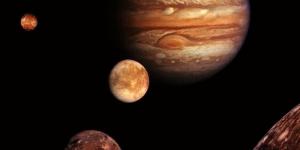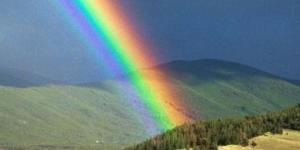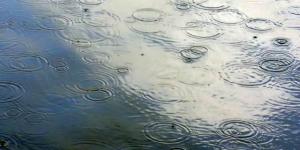What is bigger, the Earth or the Moon?


Surely you have asked yourself this question more than once as, from our perspective, we might imagine the Moon to be a huge sphere that may even exceed the size of the Earth. Although most of the planets orbiting our galaxy have more than one satellite, in our case we have only one moon, the Moon, which moves in relation to the Earth's rotation.
In this OneHowTo article we will answer the question of what is bigger, the Earth or the Moon, and give all you the data you need understand a little more about space.
What is the size of the Earth?
First and most important of all, when asked "Is the Moon is larger than the Earth?", the answer is no. However, let's explore that deeper.
Indeed, our planet is 3.6 times larger than the Moon. The total surface area of our planet is 10 times larger than that of the Moon. However, it is true that the Moon is the largest satellite in the solar system in relation to the size of the accompanying planet, in this case the Earth.
Is Earth a big planet?
Although our planet is larger than its satellite, its size as a planet is not very large. Astronomers use a basic measure to understand the size of the planets: comparison. In our Solar System there are 8 planets with very different sizes, and Earth is one of the medium-sized ones. The Earth is not as small as the several hundred dwarf planets - including Pluto, which is not a regular planet anymore - or Mercury or Mars, but it's also not as large as Jupiter. In fact, Jupiter is 11 times bigger than Earth.
Of course, the Earth is nowhere near the size of the Sun, a star that is 109 times larger than Earth and 10 times bigger than Jupiter. The sun is the largest sphere (by far) in our Solar System, and its gravitational pull makes the planets spin around it.
How big is Earth?
If you want to know the actual size of our planet, the latest figures suggest that the length of the circumference of the Earth, i.e. the equator, is 40,030 kilometers (24,874 miles) long and its surface area is 509,903,550 square kilometers (around 197 million square miles), and more than 70% is covered in water.
The Earth is not a perfect sphere; instead its shape resembles that of a pear: the North Pole is dilated by 10 metres (32'9'') and the South Pole is sunk by 31 (101'8''). It is wider above than below, so it is similar to the shape a pear when placed upside down. This also means that the circumference of the Earth when measured horizontally is longer than when measured vertically.

What is the size of the Moon?
How big is the Moon?
We have already said that the Moon is smaller than the Earth. The diameter of the Moon is 3,476 kilometers (2159 miles) long and its weight is also lower: the Moon weighs about 80 times less than our planet. From our perspective the size of the Moon and the Sun are not so different, but the truth is that the Moon is much, much smaller than the Sun.
The moon is 386,000 kilometers (239849 miles) away from Earth, a fairly close distance that allows travel to the satellite to take place in just 3 days. This closeness is what makes the Moon look so big, comparable to the size of the Sun, but we must not forget that the satellite is very close while the Sun is far away.
All the planets of the Solar System have a variety of moons - that is, of satellites - and there are some that are bigger than our own. Ganymede, one of Jupiter's satellites, is bigger than the planet Mercury. However, the size difference between the Moon and the Earth is not so great and, in fact, it is the smallest difference between a planet and its satellites.
Why does the size of the Moon change?
Something curious happens when we see the Moon appear in the sky: It seems to start off very large and as it ascends into the sky it appears to dwarf. What happens here? The Moon's size is actually always the same, and its orbit is static; what happens is an optical illusion.
Astronomers suggest that when the Moon is on the horizon we can compare it with reference points we are familiar with, but as it rises towards the sky it appears isolated and smaller, while in reality it stays exactly the same size.
Furthermore, the Moon's orbit around the Earth is not a perfect circle; there is a variation of 40,000 kilometres (almost 25000 miles) from its nearest point and its farthest point from the Earth, so when the Moon is closer to our planet it looks bigger.
What is for certain is that there are different Moon phases, these being changes that the satellite's appearance undergoes during the course of a month. Through these different stages, the Moon's appearance again seems to change.

What is the function of the Moon?
At the beginning of the article we talked about the importance of the Moon for the Earth, but what does it really affect? The Moon is actually a vital element in our ecosystem; through its influence, the different ecosystems of our planet remain balanced.
The gravitational action that the Moon pulls on the terrestrial sphere creates ocean currents and tides that are essential to preserve marine life. Besides, the Moon manages to keep our climate within optimal temperatures that allow human life. If we did not have the satellite's effects on the planet the seasons would become chaotic; moreover, the Earth would turn every 8 hours instead of every 24 hours, which would greatly affect the way we live.
Current weather intensity would not be maintained as there would be violent winds that a lot more powerful than the hurricanes we know of today. The atmosphere would have more oxygen and our magnetic field would be three times more intense, causing 80% of animals to become extinct.
Some people believe that the Moon has a direct influence in our personalities and the consequences of our choices; for instance, here we explain whether it is good to cut your hair on a full moon according to astrology.

So now you know what is bigger, the Earth or the Moon. The Moon's size, place and orbit has a direct effect on the life of the entire planet, so it's good to be informed!
If you want to read similar articles to What is bigger, the Earth or the Moon?, we recommend you visit our Hobbies & Science category.







